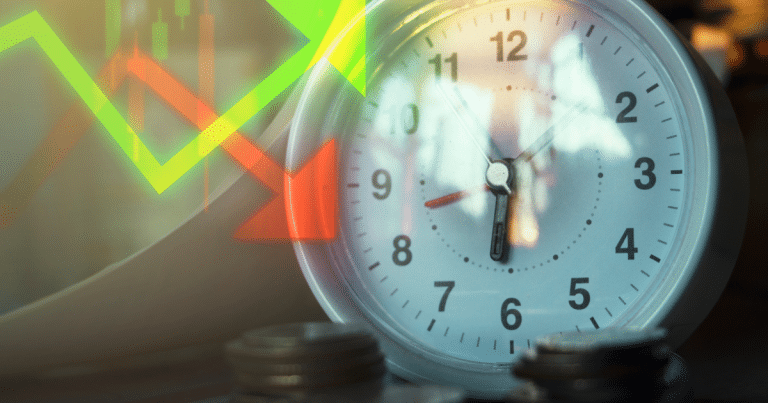
Getting the Hang of Weighted Averages
Weighted averages are like the secret sauce in data analysis, especially if you’re into stock trading. By giving different weights to data points, they paint a clearer picture of your dataset, helping you make smarter decisions.
Why Weighted Averages Matter
Weighted averages give each data point a different level of importance. This method offers a clearer snapshot of your data compared to just averaging everything out. In stock trading, this accuracy is a game-changer for making smart moves.
| Data Point | Value | Weight |
|---|---|---|
| A | 10 | 0.2 |
| B | 20 | 0.3 |
| C | 30 | 0.5 |
Let’s crunch the numbers for the weighted average:
Weighted Average = ( 10 × 0.2 ) + ( 20 × 0.3 ) + ( 30 × 0.5 ) = 3 + 6 + 15 = 24Weighted averages are super handy for dealing with skewed data or outliers, making sure the important stuff gets more attention (Investopedia). This is a big deal in stock trading, where market quirks can really shake things up.
Where Weighted Averages Shine
Weighted averages aren’t just for finance nerds—they’re useful in all sorts of fields like statistics, engineering, and manufacturing. But let’s stick to finance for now.
In stock trading, weighted averages come in clutch in several ways:
- Portfolio Management: They help calculate the overall return of a portfolio by weighing each asset’s contribution.
- Volume Weighted Average Price (VWAP): This metric shows the average price a stock has traded at during the day, factoring in both volume and price. Curious? Check out our article on volume weighted average price.
- Investment Analysis: Weighted averages give a deeper analysis by weighing stocks based on things like market cap or trading volume.
Want to see how weighted averages stack up against other methods? Dive into our article on weighted moving average.
By getting a grip on weighted averages, stock traders can level up their strategies and make sharper decisions. For more tips and tricks, swing by our page on moving average trading strategies.
Calculating Weighted Averages
When it comes to stock trading and managing your portfolio, knowing how to calculate weighted averages can give you a sharper view of your data, helping you make smarter decisions. Let’s break down the formula for weighted averages and walk through an example to make it crystal clear.
Weighted Average Formula
A weighted average gives different importance to each data point based on its significance. This method paints a more accurate picture of your data, especially when some values are more important than others or when dealing with outliers (Investopedia).
Here’s the formula:
Weighted Average = ∑ ( x i × w i ) ∑ w iWhere:
- ( x_i ) = individual data points (like stock prices)
- ( w_i ) = weights (like the number of shares)
- ( ∑ ) = sum of the products of data points and their weights
Weighted Average Calculation Example
Let’s make this real with an example involving stock prices and their weights (number of shares).
Example Data:
| Stock | Price per Share (( x_i )) | Number of Shares (( w_i )) |
|---|---|---|
| A | $50 | 20 |
| B | $100 | 10 |
| C | $75 | 15 |
Calculation:
- Multiply each stock price by the number of shares:
[ 50 x 20 = 1000 ]
[ 100 x 10 = 1000 ]
[ 75 x 15 = 1125 ]
- Add up these products:
[ 1000 + 1000 + 1125 = 3125 ]
- Add up the weights (number of shares):
[ 20 + 10 + 15 = 45 ]
- Divide the sum of the products by the sum of the weights:
[ \text{Weighted Average} = \frac{3125}{45} \approx 69.44 ]
So, the weighted average price per share for these stocks is about $69.44. This example shows how weighted averages give you a clearer picture when different values in your dataset have different levels of importance (Faster Capital).
For more on how weighted averages are used in trading strategies, check out our sections on weighted moving average and the volume-weighted average price. Also, our articles on moving average trading strategies and exponential moving average crossover strategy dive deeper into practical uses of these methods in stock trading.
Benefits and Limitations of Weighted Averages
Weighted averages are a big deal in finance and stock trading. Knowing their ups and downs can help traders sharpen their game.
Benefits of Weighted Averages
Weighted averages come with some sweet perks, making them a go-to in financial analysis and trading.
Handling Skewed Data: When your data’s all over the place or has some wild outliers, weighted averages step in to save the day. They give more importance to the heavy hitters, painting a clearer picture of the data (Investopedia).
Flexibility: These averages aren’t just for finance. They’re handy in stats, engineering, and manufacturing too. You can tweak them to fit whatever you need (Investopedia).
Better Financial Analysis: In finance, weighted averages help with everything from portfolio returns to inventory accounting. They make your analysis sharper and your decisions smarter (Investopedia).
Accurate Data Representation: When different data points matter more than others, weighted averages give you a more accurate average. By assigning weights based on importance, you get a clearer, more meaningful result (Investopedia).
Limitations of Weighted Averages
But hey, they’re not perfect. Weighted averages have their quirks too.
Outlier Sensitivity: If you’ve got some crazy outliers with high weights, they can throw off your average big time. Be careful with datasets that have outliers.
Complex Calculations: Figuring out weighted averages can be a headache, especially with big datasets or lots of variables. You might need some advanced skills and tools, which can be a pain for some traders.
Subjective Weights: Deciding what weight to give each value can be pretty subjective. Different folks might assign different weights, which can mess with the accuracy of your average.
Misinterpretation Risk: If you don’t use them right, weighted averages can lead you astray. It’s crucial to know the context and why each weight matters to avoid wrong conclusions.
For more on different types of averages and how to use them, check out our articles on moving average types and weighted moving average. Also, dive into strategies like the exponential moving average crossover strategy and concepts like volume weighted average price for a deeper trading toolkit.
Weighted Averages in Finance
Weighted averages are like the secret sauce in finance, helping traders and investors make smarter moves. Let’s break down how they work in stock trading and portfolio management.
Weighted Averages in Stock Trading
In stock trading, weighted averages give a clearer picture of a stock’s performance. One popular method is the Volume-Weighted Average Price (VWAP). VWAP shows the average price a stock has traded at during the day, factoring in both volume and price.
Here’s how you calculate VWAP:
- Multiply the price of each trade by the number of shares traded.
- Add up all those values.
- Divide by the total number of shares traded.
This helps traders see the real average price of a stock, considering how many shares were involved.
| Time | Price ($) | Volume (Shares) | Price * Volume ($) |
|---|---|---|---|
| 09:30 | 100 | 500 | 50,000 |
| 10:00 | 105 | 700 | 73,500 |
| 10:30 | 103 | 600 | 61,800 |
| Total | – | 1800 | 185,300 |
VWAP = Total Price * Volume / Total Volume
VWAP = 185,300 / 1800 = 102.94
So, a VWAP of 102.94 gives a better view than just averaging the prices.
For more on VWAP, check out our detailed guide.
Weighted Averages in Portfolio Management
Weighted averages are a big deal in managing portfolios too. They help calculate the weighted average return of a portfolio, which is key for checking performance and making investment choices.
To find the weighted average return:
- Find the return of each asset in the portfolio.
- Multiply each return by its weight (percentage of the total portfolio).
- Add up these values.
Example:
| Asset | Return (%) | Weight (%) | Return * Weight (%) |
|---|---|---|---|
| Stock A | 8 | 50 | 4 |
| Stock B | 12 | 30 | 3.6 |
| Stock C | 5 | 20 | 1 |
| Total | – | 100 | 8.6 |
Weighted Average Return = 4 + 3.6 + 1 = 8.6%
An 8.6% weighted average return gives a more detailed view of the portfolio’s performance than a simple average.
For more tips on using weighted averages in portfolio management, check out our articles on moving average types and exponential moving average.
Weighted averages also help in setting portfolio weights and in inventory accounting methods like LIFO and FIFO, adding depth to financial analysis. Knowing these tricks helps investors make better, more strategic decisions.
Practical Use of Weighted Averages
Weighted averages are like the secret sauce in finance, adding depth to decision-making. Let’s break down two real-world examples: the Weighted Average Cost of Capital (WACC) and the Volume-Weighted Average Price (VWAP).
Weighted Average Cost of Capital
The Weighted Average Cost of Capital (WACC) is a way to figure out a company’s cost of capital, with each type of capital weighted by its proportion. It includes everything from common stock to bonds. Here’s the formula:
WACC = ( E V × Re ) + ( D V × Rd ×(1 – Tc )Where:
- ( E ) = Market value of the equity
- ( D ) = Market value of the debt
- ( V ) = Total market value of the company’s financing (equity + debt)
- ( Re ) = Cost of equity
- ( Rd ) = Cost of debt
- ( Tc ) = Corporate tax rate
WACC is like a litmus test for investments. If the return on investment beats the WACC, it’s a green light. For a deeper dive into WACC, check out our article on moving average types.
Volume-Weighted Average Price (VWAP)
The Volume-Weighted Average Price (VWAP) is a trader’s best friend, showing the average price a security has traded at during the day, factoring in both volume and price. Here’s how you calculate it:
VWAP = ∑ ( Price i × Volume i ) ∑ Volume iWhere:
- ( Price_i ) = Price of trade i
- ( Volume_i ) = Volume of trade i
VWAP helps traders get a grip on the average trading price over a period. It’s especially handy for those dealing with large blocks of shares, ensuring they trade close to the average price. For more on VWAP, visit our page on volume weighted average price.
| Metric | Example Calculation |
|---|---|
| Total Value of Trades | $1,000,000 |
| Total Volume of Trades | 50,000 shares |
| VWAP | $20 |
If you’re looking to spice up your trading strategies, also check out the exponential moving average and the moving average convergence divergence.
By getting the hang of these weighted averages, traders can sharpen their strategies and make smarter moves in the stock market.
Differentiating Weighted Averages
Grasping the difference between weighted averages and arithmetic means can really up your trading game. Each has its perks, especially when you’re deep into stock trading and managing your portfolio.
Weighted Average vs. Arithmetic Mean
The arithmetic mean, or simple average, is what you get when you add up all the values in a dataset and divide by the number of values. It treats every value the same, assuming they’re all equally important. For example, if you’re looking at stock prices over time and each price matters equally, the arithmetic mean works just fine.
| Value | Calculation | Result |
|---|---|---|
| Data Points | 10, 20, 30, 40, 50 | |
| Arithmetic Mean | (10 + 20 + 30 + 40 + 50) / 5 | 30 |
Now, the weighted average is a bit different. It gives different importance to each value. This is super handy when some data points matter more than others, like different trading volumes or investment levels. According to Statistics By Jim, you multiply each data point by its weight, add up these products, then divide by the sum of the weights.
| Value | Weight | Calculation | Result |
|---|---|---|---|
| 10 | 1 | 10 * 1 | 10 |
| 20 | 2 | 20 * 2 | 40 |
| 30 | 3 | 30 * 3 | 90 |
| 40 | 4 | 40 * 4 | 160 |
| 50 | 5 | 50 * 5 | 250 |
| Sum of Products | 10 + 40 + 90 + 160 + 250 | 550 | |
| Sum of Weights | 1 + 2 + 3 + 4 + 5 | 15 | |
| Weighted Average | 550 / 15 | 36.67 |
The weighted average gives a clearer picture when some data points are more important, as Faster Capital points out.
Picking the Right Average
Choosing between the arithmetic mean and the weighted average depends on what you’re dealing with. For traders, knowing when to use each can make a big difference in strategy and results.
1. Use Arithmetic Mean When:
- Every data point is equally important.
- You’re looking at average values in a balanced dataset.
- You want something quick and easy to calculate.
2. Use Weighted Average When:
- Data points have different levels of importance.
- You’re dealing with datasets where quantities or qualities vary a lot.
- You need a more accurate overall average.
Take stock trading, for example. The Volume Weighted Average Price (VWAP) is a real-world use of the weighted average. VWAP considers the volume of stocks traded at different prices, giving you a more accurate average price for the day. For more on moving averages and how they can help in trading, check out our articles on moving average types and moving average trading strategies.
By understanding these two methods, traders can make smarter decisions and tweak their strategies to fit their needs. Whether you go with the straightforward arithmetic mean or the detailed weighted average, knowing when and how to use each can boost your trading performance.








This is super helpful! I’ve been struggling with weighted averages, but this explanation makes it so much clearer. Thanks for breaking it down.
Nice article! The examples are really helpful. I’m still a little fuzzy on the whole weighted average thing, but I’m sure it’ll click eventually. 😅
whoa! weighted averages have so many uses! i’m gonna have to try using them to calculate my portfolio returns now. this post really opened my eyes.
Im a big fan of how you explained the Why behind weighted averages Its not just a formula its a realworld tool I can definitely see how it would be used in different fields
i think it’s great you included the formula itself. i’m sure it’s helpful for some people, but i found the explanation of how to use it much more useful.